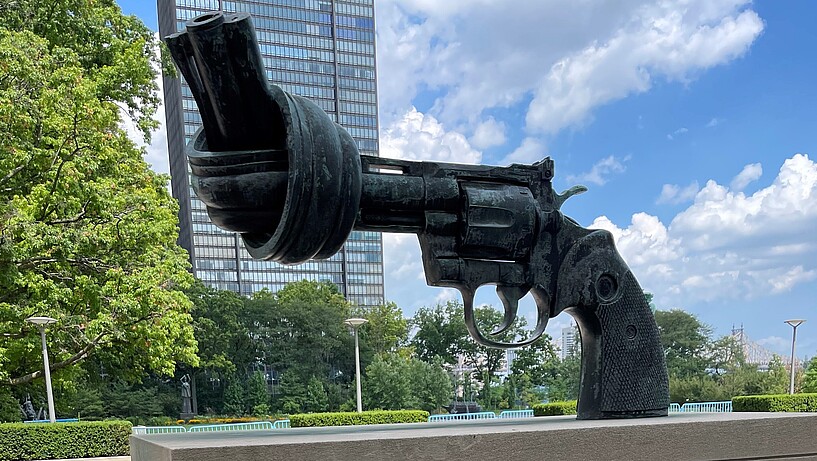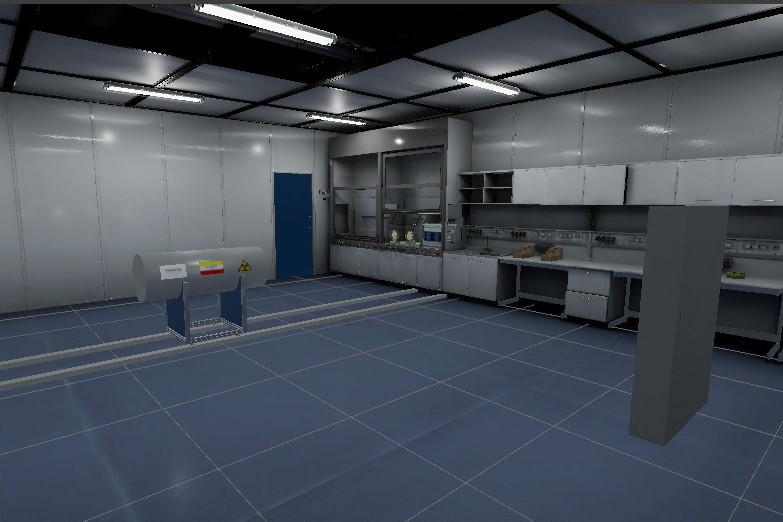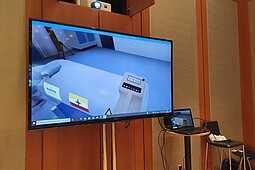Mr. Kuhr, how did the cooperation with the Centre for Natural Sciences and Peace Research at Universität Hamburg begin?
Dipl.-Ing. Matthias Kuhr: The initial contact came about through Professor Dr. Gerald Kirchner, the head of the centre, who is also a researcher in the Nuclear Disarmament Verification (NuDiVe) project. He happened to see an ad in the metro for the M.Sc. in Digital Reality at HAW Hamburg. It was immediately clear to him that digital reality held great potential for the NuDiVe project, as it would make it possible to digitalise the nuclear disarmament concepts and thus make them independent of time and place. This is how Nuclear Disarmament Verification Virtual Reality (NuDiVe VR) came into being – an important step in speeding up the process development in this project.
Your virtual reality tool applies the disarmament concepts from the German-French 'nuclear disarmament verification' exercise in a virtual environment. What does a user see in the virtual reality tool?
Matthias Kuhr: We have built a digital twin of NuDiVe. To do this, we developed a 'multiplayer virtual reality sandbox'. This is a virtual reality multiplayer gaming environment. It makes it possible for anyone with virtual reality glasses and an Internet connection to take part in this virtual environment. They can see themselves as avatars and converse using voice chat. In this environment, we've implemented the tools necessary for the nuclear disarmament verification process. These include a security camera system with the ability to record and a system for physically correct measurement of radiation, which is portrayed using digital measurement instruments.
It is important to understand that the disarmament process is highly complex, because the participating actors are pursuing different goals. On the one hand, the states that have committed to disarming do not want to give away any military secrets. This means that inspectors cannot completely monitor the process. Yet at the end they are supposed to be able to verify whether the nuclear warheads have been completely disarmed, and ensure that part of the fissile material hasn't been hidden away in the building to build new, secret warheads.
There are different roles that can be played virtually. When you take on the role of host, you play the person who is carrying out the disarmament of a warhead in their own country. Or you can try out the role of an inspector who is supposed to verify disarmament. Another role is that of the neutral observer. Each role in the NuDiVe process has a different clothing colour to make it easier to keep track of who is who.



